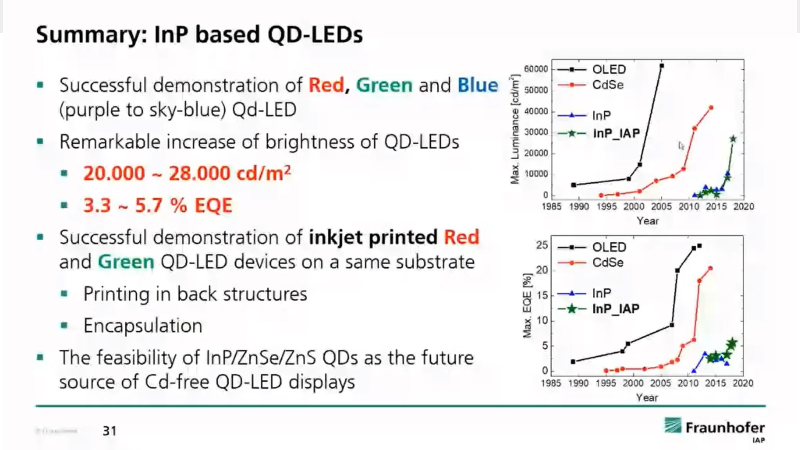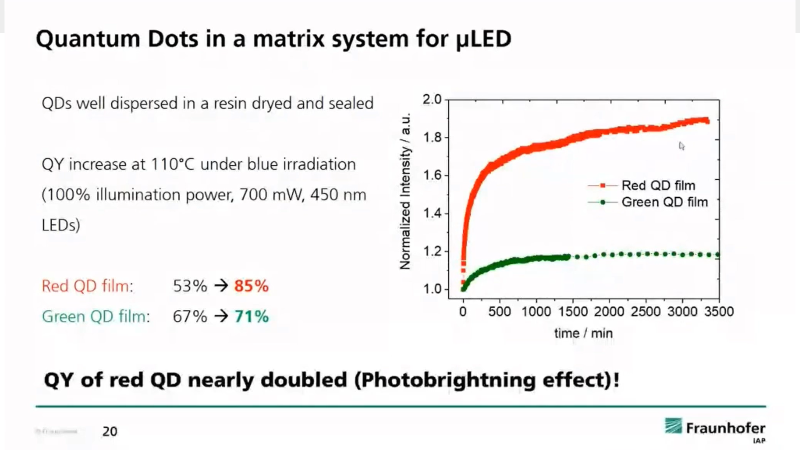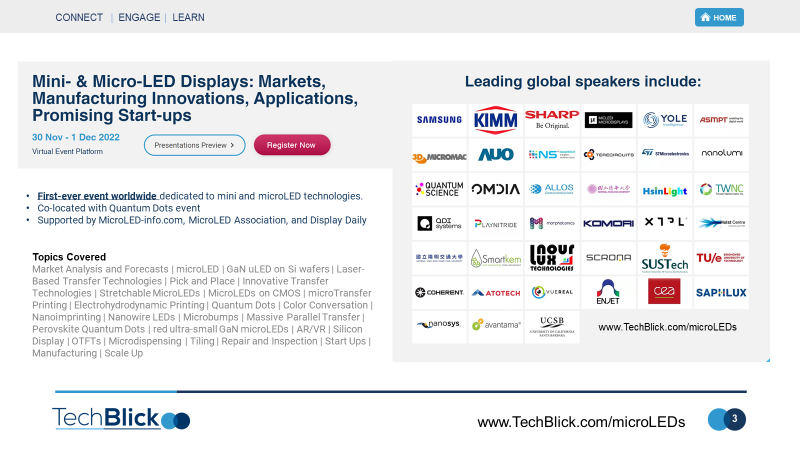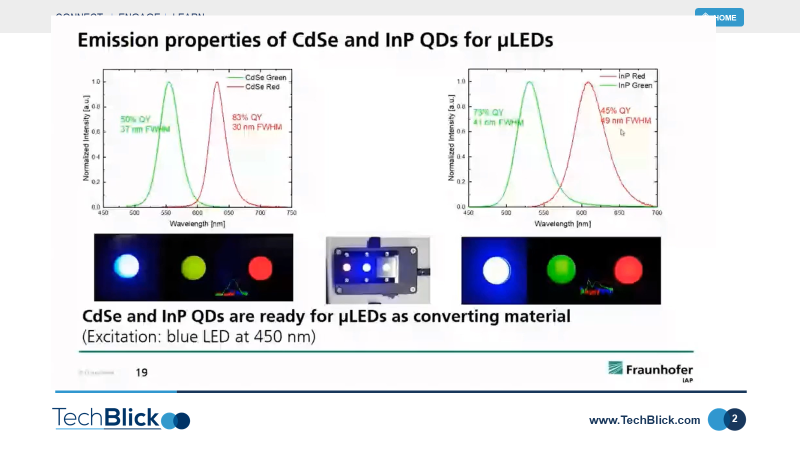Fraunhofer-Institut für Angewandte Polymerforschung IAP is a leading research group in the field, always pushing forward the performance boundries of QD technology. As shown below, Armin Wedel shares some updates in his May 2021 TechBlick presentation. Here are some key points:
1) Cd-free QD materials: slide one shows optimized results for QY, FWHM, and PL of blue, green, and red QDs based on Cd-free chemistries.
The B, G, and R QDs consist of ZnTeSe/ZnSe/ZnS, InZnP, GaP/ZnSe/ZnS, and InZnP/ZnSe/ZnS core-shell structures, enabling one to approach BT.2020 standards in a non-emissive display.
These are very innovative chemistries and core-shell structures: The Te doping in ZnSe core enables very saturated blue colors with high QY (92%); the GaP shell and controlled heating enables the narrowing of the usually wide FWHM of InP-based QDs to 41nm; and the application sodium oleate during core synthesis of R QDs enables even narrower FWHM
2) QDs as color conversation in microLEDs: Slide two shows that CdSe and InP QDs can be used as color converters in microLEDs, whilst slide three shows QDs can be stable in a matrix system for uLEDs. QD color conversion is very promising for
3) Emissive QD-LEDs: OLED max luminance and EQE still beat that of emissive QD-LEDs which are far less mature. CdSe have improved over the years, offering excellent performance, but Cd toxicity is a concern. The performance of InP QD-LEDs lags far behind in terms of Cd/m2, EQE, and lifetime.
This is an exciting development area. Indeed, there is already a roadmap from RGB OLED or WOLED to full inkjet printed (IJP) QD-OLED via the development and scale up of Blue OLED + IJP (R,G) QD Conversation technology.
To learn more join the world's first ever microLED and QD event online www.TechBlick.com/microLEDs















Comments